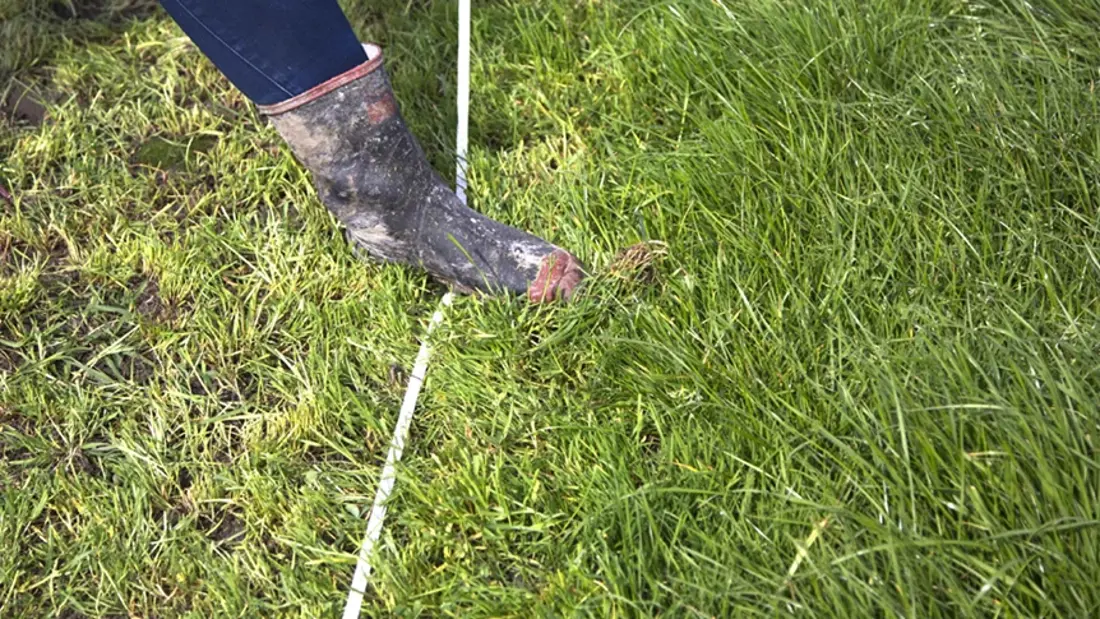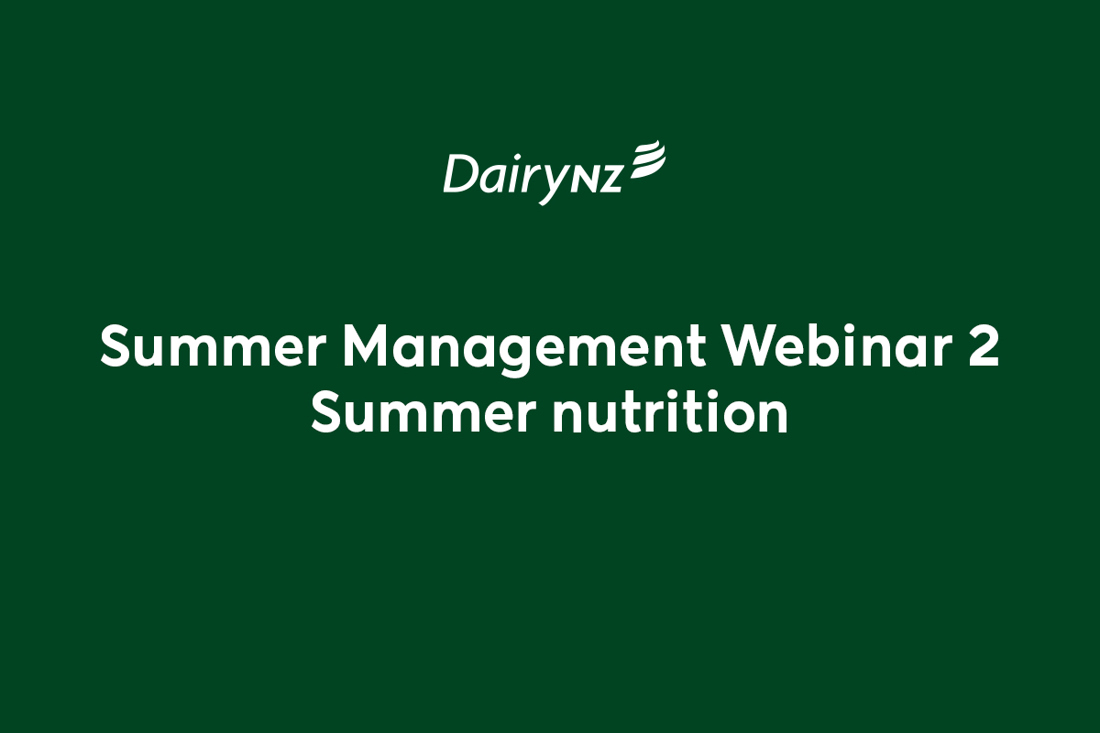Summer management
9 min read
Successful summer management means regular monitoring. Go for farm walks, manage grazing residuals, monitor body condition scores, keep up-to-date with industry information, and plan ahead. Effective summer feed management ensures cows have consistent nutrition, which maintains milk production and overall farm performance during the critical summer months.
Regular monitoring allows you to evaluate options available for stock and feed management based on the most accurate information. On-farm, keep an eye on the weather forecast and benchmark yourself against others to help with decision-making.
If you are irrigating pastures, have a contingency plan for when water restrictions are applied. One option is to fully water the best part of your farm rather than poorly watering the whole farm. Irrigated crops can provide a high return. Learn more on managing water supply restrictions.
The main difference between summer and spring pastures in dry regions is that during summer, leaf emergence and pasture growth rates are slower because of less moisture. Slowing down the round or increasing the number of days in the rotation to capture the three-leaf stage will help maximise growth during the summer and increase feed available in autumn months. See leaf stage.
In summer-dry non-irrigated regions, high air temperatures and moisture stress can cause a build-up of dead material (stem and stalk) in the pasture base. This may increase dry matter percentage and fibre content, but also reduces pasture quality; this needs to be considered when allocating daily pasture allowances.
For example, a mid-lactation cross-bred cow weighing 500kg LW producing 1.4kg MS and walking 2km over rolling terrain requires approximately 167MJ ME/day. This equates to:
Over-grazing pastures in summer depletes a plant's energy stores primarily contained in the bottom 4cm of the plant.
This results in a lag in pasture regrowth when moisture become available, e.g. after the autumn rains. Severe or repeated overgrazing during this period can result in plant death which will have negative consequences for longer-term pasture persistence. Manage pasture condition so when it rains pastures are in good shape to respond.
Options to reduce over-grazing include:
It's important that post-grazing residuals are no greater than 4.5 cm during summer. If higher residuals remain in summer, pasture quality will decline further and dead material in the pasture base will rot when it rains.
Additionally, in areas prone to facial eczema (FE), leaving high residuals and increasing the amount of dead litter in the base of the sward will increase the risk of high spore counts and FE.
Options to avoid under-grazing:

During mid-lactation, energy is generally the limiting nutrient in a pasture-based system. Feeding an energy supplement in summer can be profitable if:
As the dry matter content (DM %) increases in summer pasture (even under irrigation) there is more dry matter available for the cows to eat compared to pasture at the same height in spring.
Protein
As a rule of thumb, protein requirements for a mid-lactation cow are 16% crude protein.
For most farms, protein will not be limiting production as crude protein content in pastures is rarely less than 16%. Protein may be limiting where a low protein supplement is fed, for example where more than 4 kg of maize silage/cow/day is being fed. Whether a protein supplement will be necessary will be dependent on the average protein content of the cow's diet especially if a high proportion of the diet is supplemented.
If protein is limiting production during the summer months in a pasture-based system, supplements high in undegradable dietary protein (UDP) are required to generate a milksolids response. Feeding supplements that are high in rumen degradable protein (RDP) or non-protein nitrogen will not improve production.
Mineral supplementation in summer depends on the diet being fed and cow requirements. Compared with cow requirements, maize silage is low in Mg, Ca, P, and Na.
If more than 3kg maize silage is fed during mid/late lactation, minerals supplementation is recommended as an inexpensive insurance against possible deficiencies which can negatively affect production and increase the risk of metabolic disorders such as staggers. As the amount of maize silage in the diet increases, the requirement for certain minerals also increases.

Video 1:09:38 min
Hot conditions will reduce production, with Holstein Friesians (HF) being more sensitive. Heat stress alone is not responsible for low summer milksolids production. For the latest research and recommendations see Heat stress.
Dry summer management strategies help to protect next season’s production and reproduction by ensuring all mixed aged cows reach a body condition score (BCS) 5.0 by calving, and first and second calvers reach a BCS of 5.5. At the same time, these strategies focus on maximising milksolids production and profit for the rest of the current season.
Download our summer management plan

Video 1:05:32 min
Use supplements wisely if conditions get dry; feeding supplements keeps animals in production longer than would otherwise be possible in a dry summer. Supplements can be profitable providing you apply best practice management and purchase the supplement at the right price.
Only purchase and feed out supplements if:
The immediate milk response is unlikely to fully cover the cost, but feeding supplements can result in maintaining more cows in milk.
A profitable return from supplements will depend on the quality of the supplement – higher energy and protein makes it more affordable, combined with the likelihood that feeding supplements results in cows still milking later in the season, and grazing residuals being above or below desired levels.
Not all feeds are the same in how much protein and fat they will produce for the same MS response, there are differences in the supplement amount required for BCS gain in dry cows. The Supplement Price Calculator takes these factors into account.
What’s your plan when pasture growth slows or a dry spell hits? In this episode of Talking Dairy, DairyNZ’s Mark Williams and farmer Enda Hawe share how to choose the right supplements, use tools like the Supplement Price Calculator, and plan to avoid future feed shortages.
Reducing your milking frequency has little affect on feed requirements but moving to once-a-day (OAD) or three times in two days (3in2) can take the pressure off cows and staff as well as give managers more time to plan and manage. Plan to alter your milking frequency before feed runs short rather than be forced into it by a severe shortage of feed.
Changing your milking frequency can:
Data from research trials indicate that cows switched to OAD in mid-January gain approximately ¼ BCS unit more before dry-off (in approximately three months) compared with cows that continue to be milked twice a day. Cows need to be milked OAD for at least six weeks before gains in BCS are apparent.
During the transition to OAD it is critical to continue feeding cows well. Maintain feed quality and quantity at twice a day levels for at least the first week. Underfeeding during the transition to OAD milking may exacerbate somatic cell issues as the somatic cells will be concentrated in a smaller volume of milk.
Research indicates that there is only a 3% decrease in feed intake when cows are switched to OAD milking during summer. If this decrease is not enough to balance feed supply and demand on the farm and reach target pasture covers, then other options (e.g. culling, drying-off some cows and/or feeding supplements) need to be implemented in conjunction with OAD milking.
Dispose of known culls. Do this earlier rather than later. Cull on pregnancy diagnosis, production worth, and somatic cell count. The objective is to carry as many cows as practicable beyond autumn without jeopardising next season.
Feeding supplements to culls is expensive. If the known culls are disposed of the rest of the herd is fed better and the extra feed goes to milk production – not to maintenance as is the case with culls. Where 20% of the herd is culled the remaining cows can be fed 25% more i.e. cows have more feed for milk production and cow condition.
The aim of early culling and drying off of low-condition score and poor-producing cows is to keep as many cows as possible milking into autumn. This is important to capture any benefits from an autumn flush in pasture growth. The later the dry period breaks, the less likely a farm will capture the carryover benefits of any additional inputs and of keeping as many cows milking as possible.

Video 56:53 min